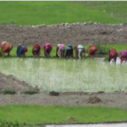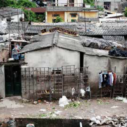
Search
Articles

Data of the Month: Colombia Municipal MPI
The National Administrative Department of Statistics (DANE) of Colombia launched its Municipal Multidimensional Poverty Measure from Census Sources. This measure consists of five dimensions: educational conditions of the household, conditions of childhood and youth, health, employment and housing conditions, and access to public services.

Living in multidimensional poverty in India: Kari’s story
Kari is a 45-year-old woman who lives in her birthplace village in Bihar, India. She was married to her husband when she was 13, and they have a son and three daughters. The family is Hindu and belongs to the Musahar caste. During certain sea- sons, Kari finds agricultural employment related to the crop cycle, often walking 15 kilometres to work.

Polishing the poverty lens
South Africa measures poverty using a monetary approach as well as multidimensionally, with the former measure being the official poverty measure.It has been my experience that you can either present complex phenomena such as poverty elegantly with a single composite index or awkwardly with a multiplicity of indices. It is a challenging task to explain the latter to busy policymakers and politicians with the short attention spans of speed-master tweeters. These two positions of simplicity versus complexity are a matter of deep intellectual discourse that spans decades if not centuries.

Editorial – Dimensions 8
In this issue, we highlight two examples of national multidimensional poverty indices. We explore Viet Nam’s experience using a national MPI as an official measure of poverty to complement income-based measures. Lo Thi Duc, Senior Statistician at the General Statistics Office of Viet Nam, takes us through how Viet Nam has used the MPI-VN not only to monitor poverty but also to identify the beneficiaries of social programmes.

Multidimensional Poverty in Viet Nam: Sustainable Poverty Reduction 2016–2020
In Viet Nam, the Government publishes national targets for poverty reduction every five years and updates poverty lines to measure changes in poverty within those five-year periods. Up to and including 2015, Viet Nam only used an income-based poverty measure. The poverty line was set at the amount of money per month sufficient for a 2100 Kcal/person/day diet as well as essential non-food spending. Using the Poverty Census, the Ministry of Labour, Invalids and Social Affairs (MOLISA) then identified and made a commune-level list of poor households based on this poverty line, and this list was reviewed and updated annually. The General Statistics Office (GSO) then conducted the Viet Nam Household Living Standards Survey (VHLSS) and disseminated its findings on income levels, poverty rates, and the GINI inequality coefficient.












